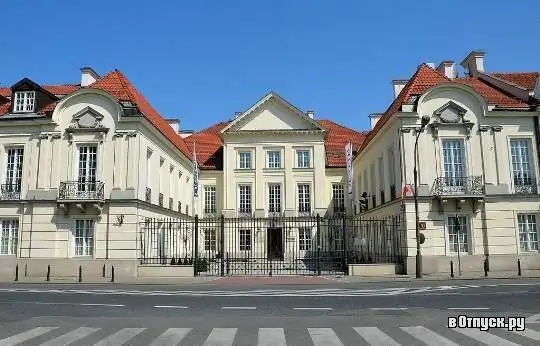
Description of the attraction
The Mlodziejovski Palace is a palace built in the 17th century in the Baroque style. Located in Warsaw in close proximity to the walls of the Old Town. The palace was built at the end of the 17th century and originally belonged to the governor Stanislav Morshtyn. In 1766 he passed to Bishop Andrei Mlodzeevsky, for whom in 1771 the interior works were carried out in the palace by the architect Yakub Fontan. During the reconstruction, projections resembling wings appeared in the palace, which were connected to the gallery. In the 90s of the 18th century, the building housed the Russian embassy, the Russian envoy Osip Igelstrom lived in the residence, because of which the palace was attacked by Polish troops in 1794, and was partially destroyed.
In 1806-1808 Count Felix Potocki hired the architect Friedrich Albert Lessel to restore the palace in the classical style. Lessel created a new wing (instead of the previously existing wing). In 1811, thanks to a new wing connected to the outbuildings, a courtyard appeared. Since 1820, the palace housed the Warsaw Merchant Assembly, and later shops were opened. By the end of the 19th century, the palace gradually turned into a tenement house.
During the Second World War, a bomb hit the building, as a result of which it was almost completely destroyed. The reconstruction began in the post-war years according to the project of the architect Boris Zinsserling and lasted until 1957. Until 2006, the building housed the office of the PWN publishing house, but then the palace was put up for auction. For 34 million zlotys, the lot went to the company, which decided to create residential apartments in the building. In 2010, the renovation work was completed, the first tenants were able to move into the apartments.






